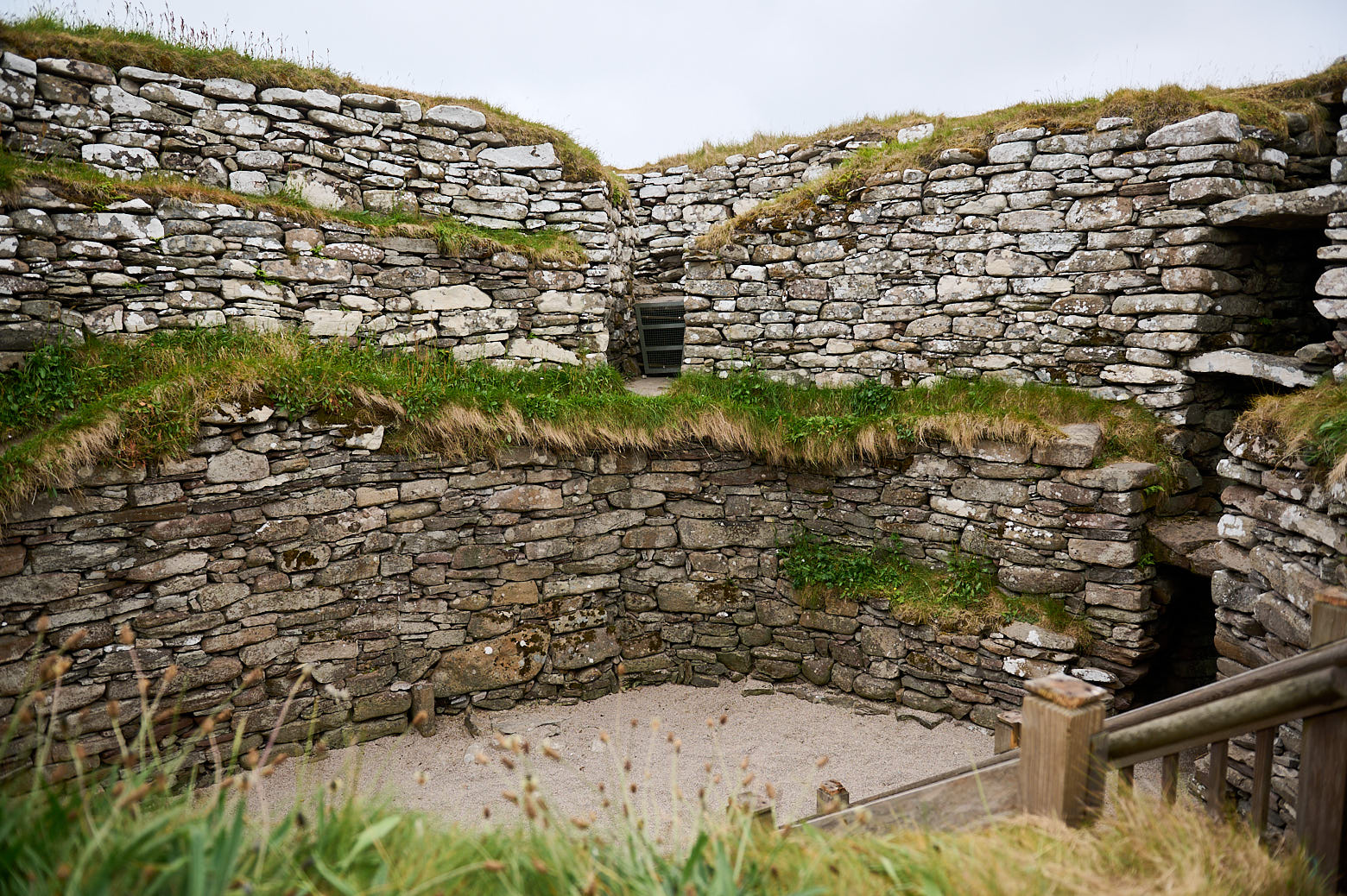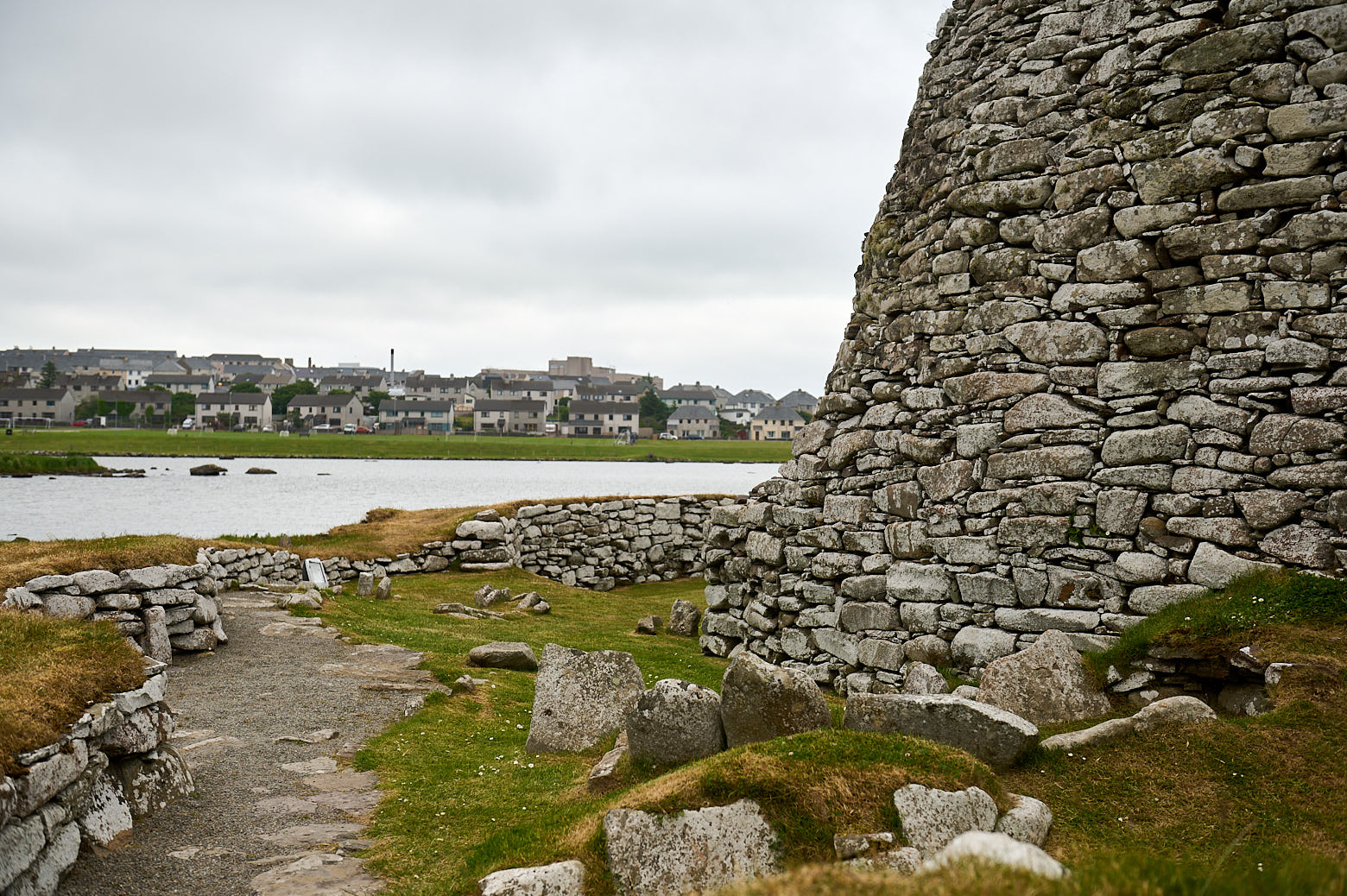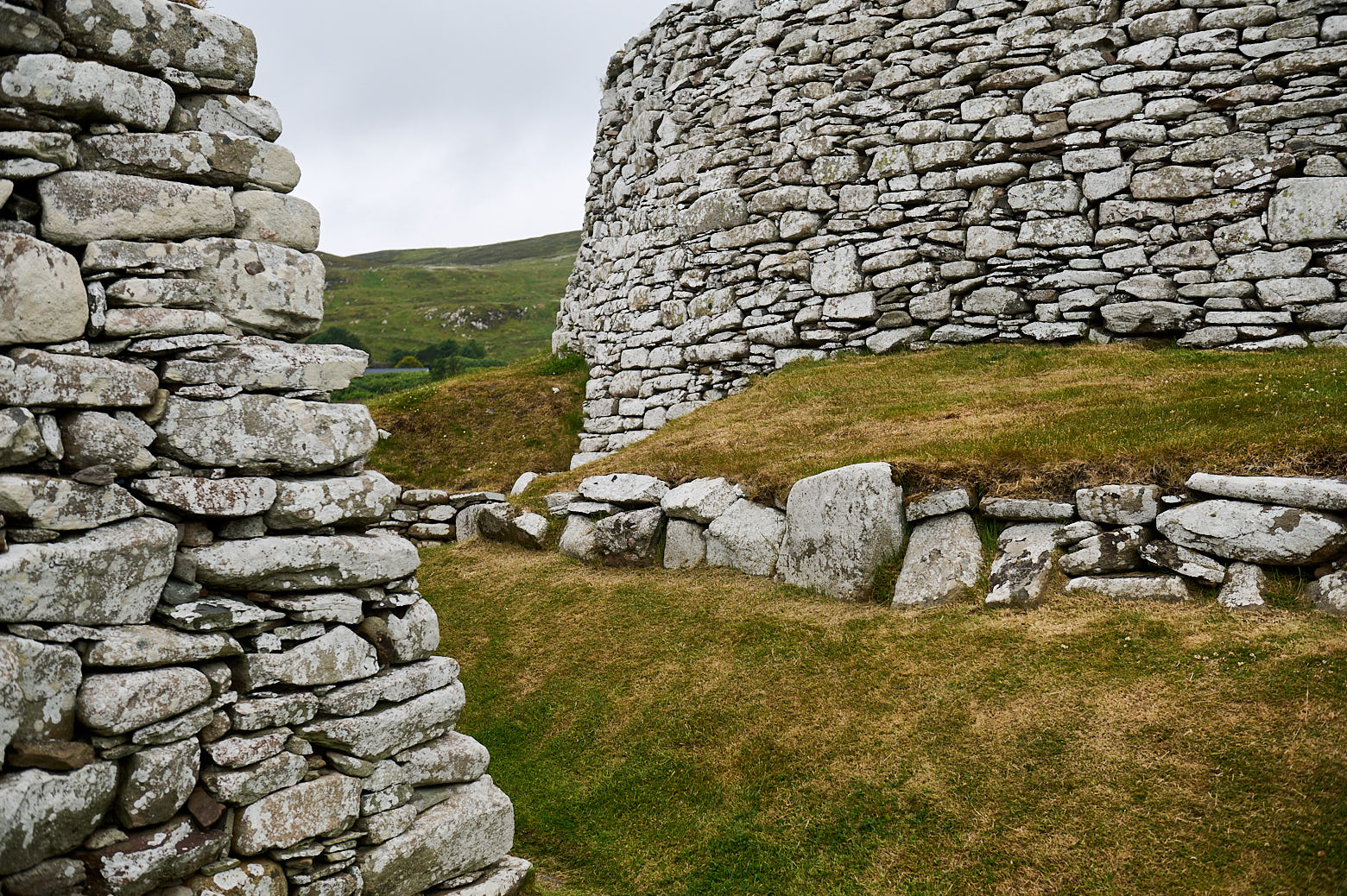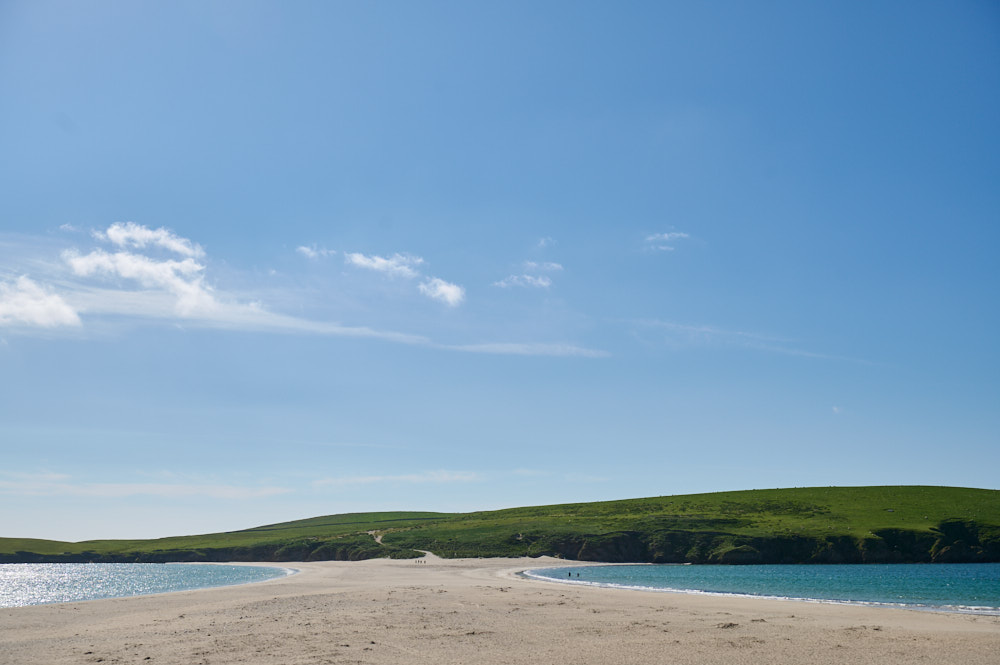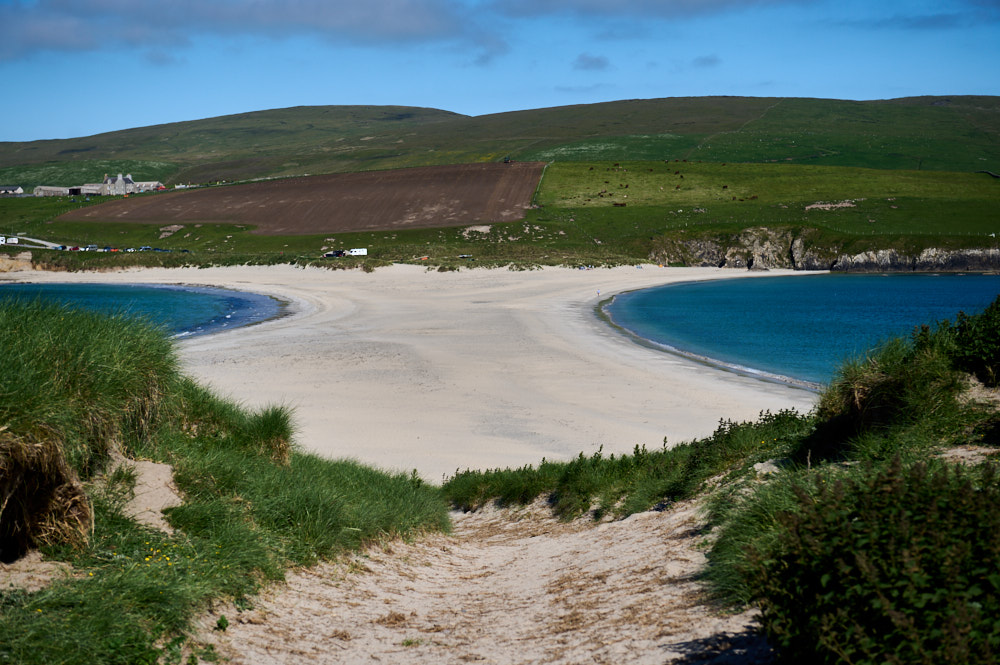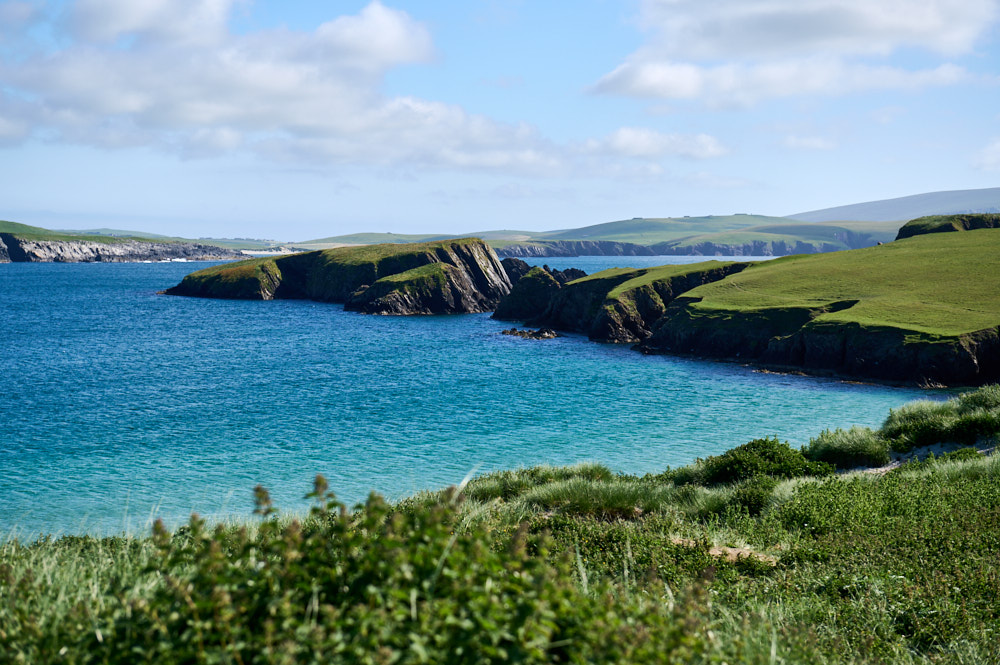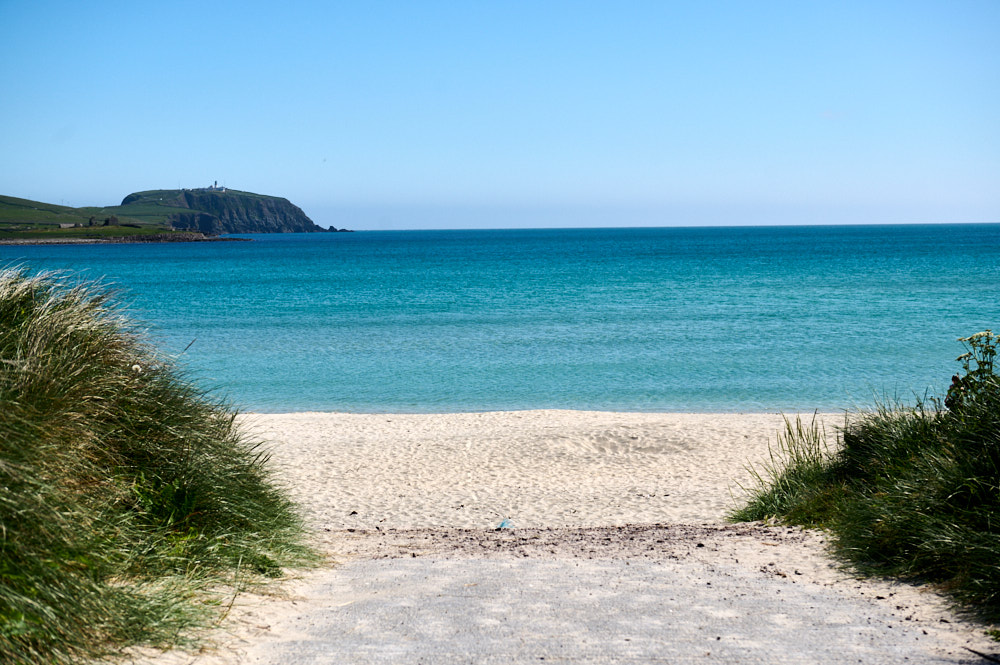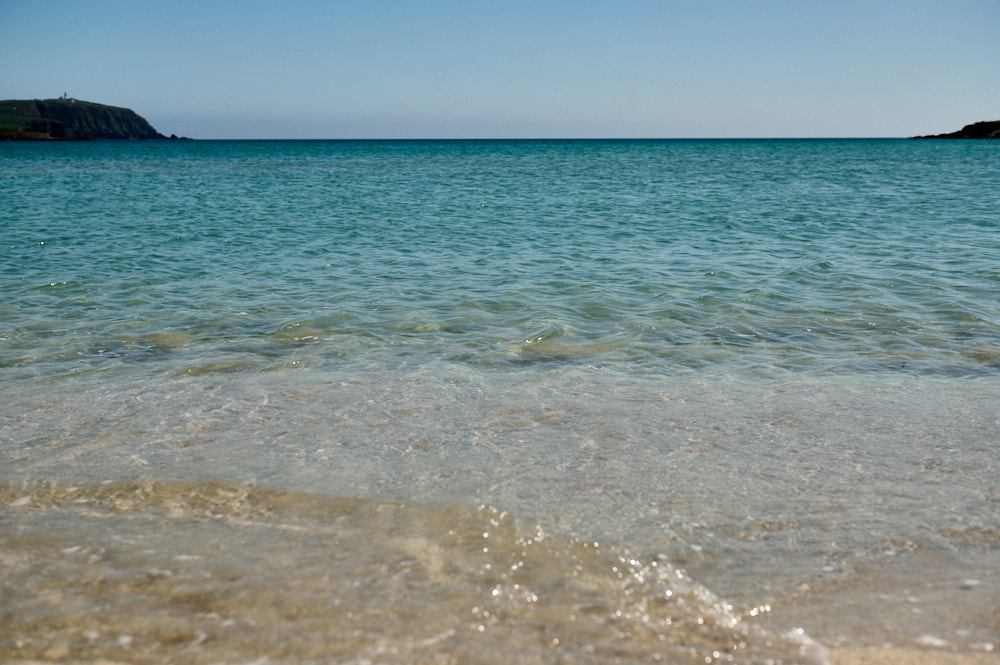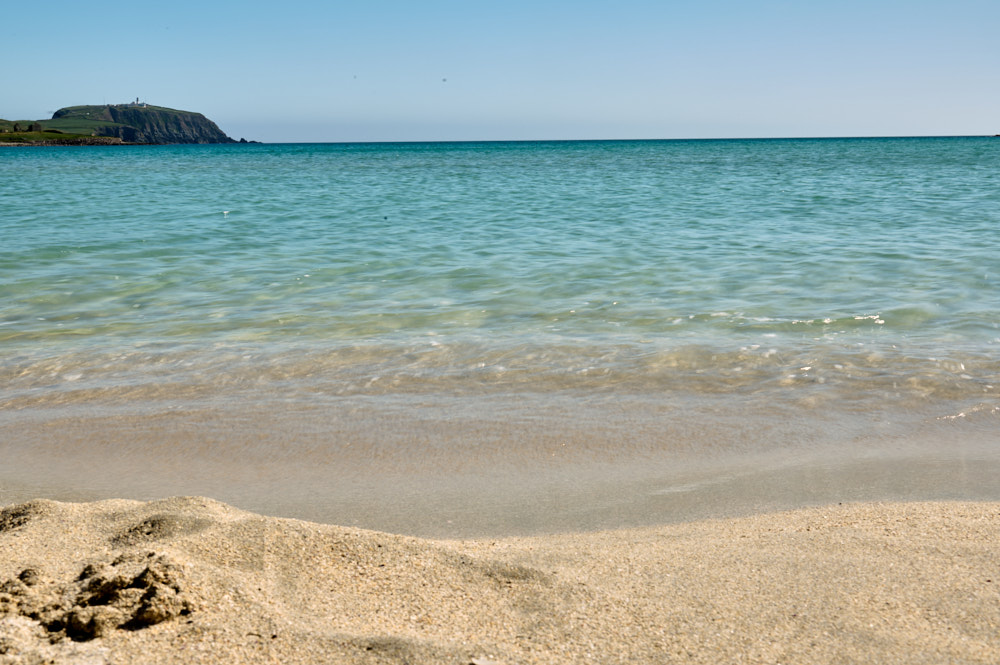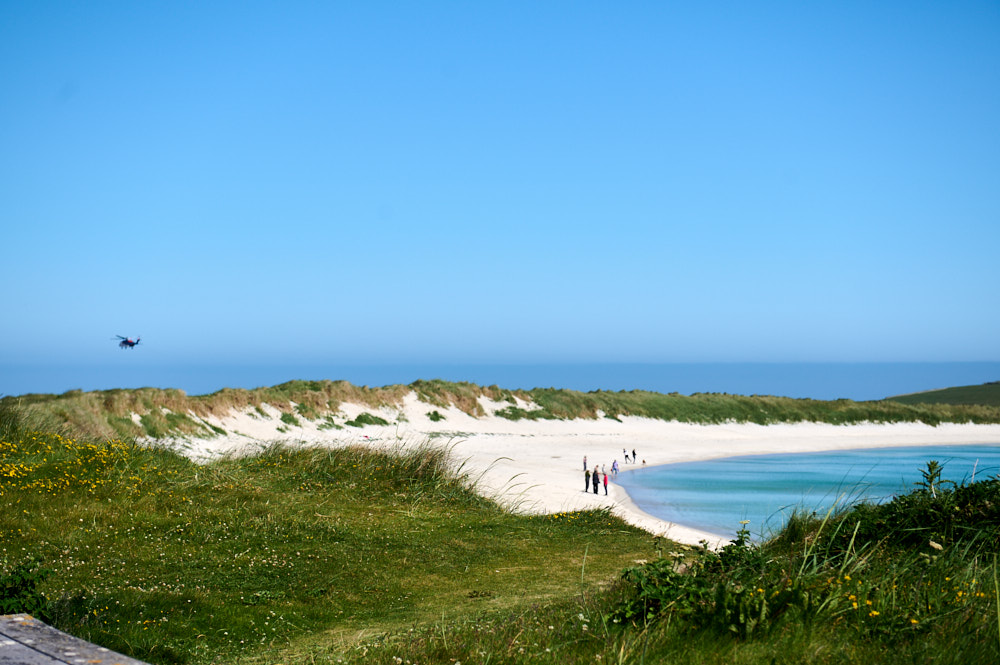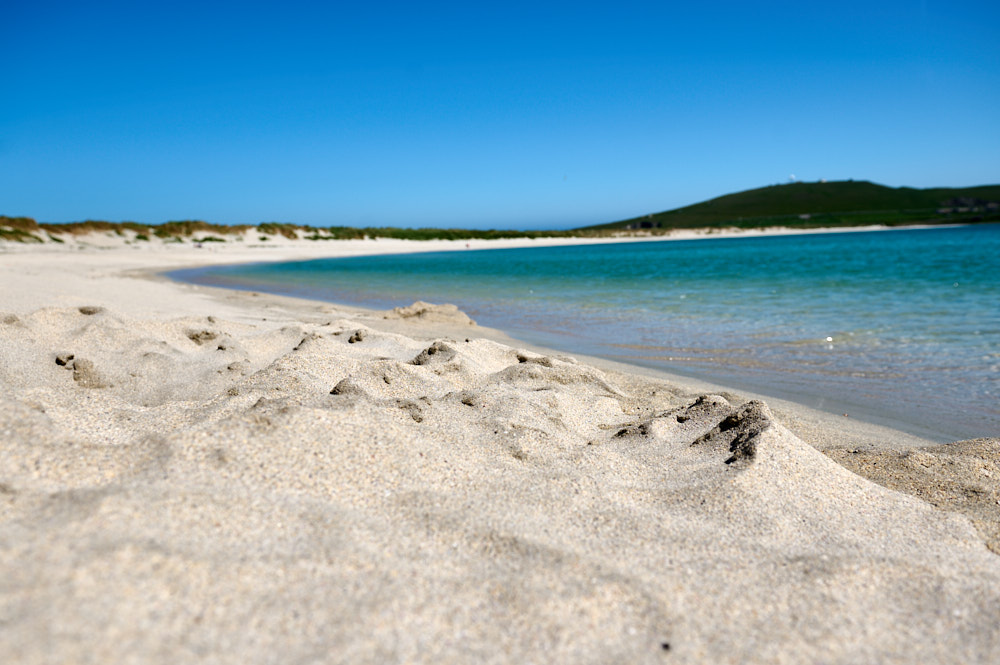Saturday morning I met my lovely hosts for a breakfast in Lerwick and afterwards I just crossed the supermarket parking space to get to Clickimin Broch situated in a little loch in Lerwick.
“Broch” is Scottish and means “fort“. They are defensive structures from the Iron Age and are round tall buildings with a spiral staircase running between the inner and outer walls.
There is a school on the other side of the Loch of Clickiminand my hosts told me that they saw the students walking around the loch as exercise when the school gymnasium was closed because of Covid.
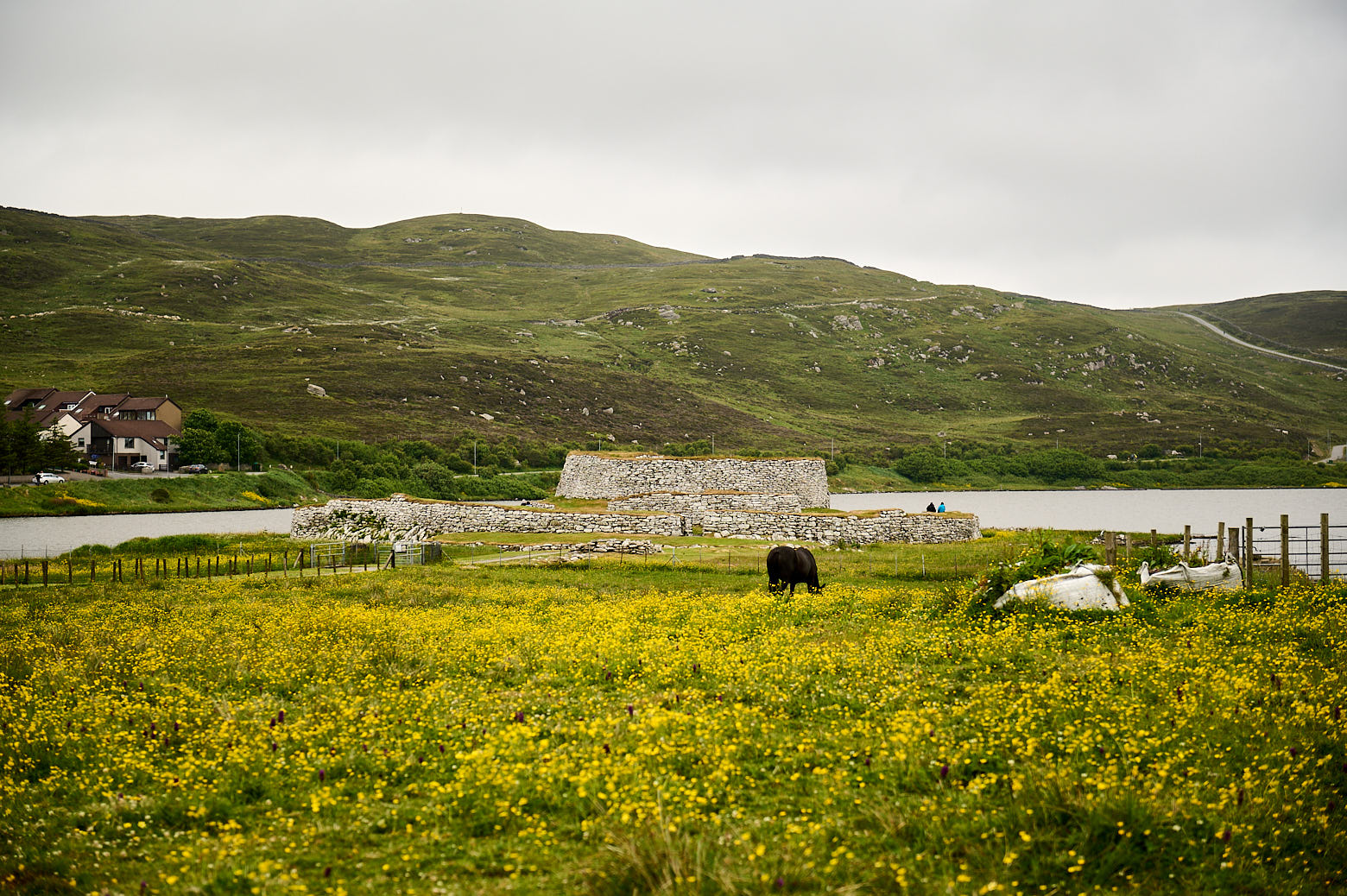
About 3000 years ago, during the Bronze Age,
a family built a small farmhouse on a grassy islet surrounded by loch or marsh, and they walled the islet to enclose their cattle and sheep. (Undiscovered Scotland)
The remains of the farmhouse lie on the northwest side of the main broch. Back then the water levels were higher and a narrow causeway connected the islet with the mainland.
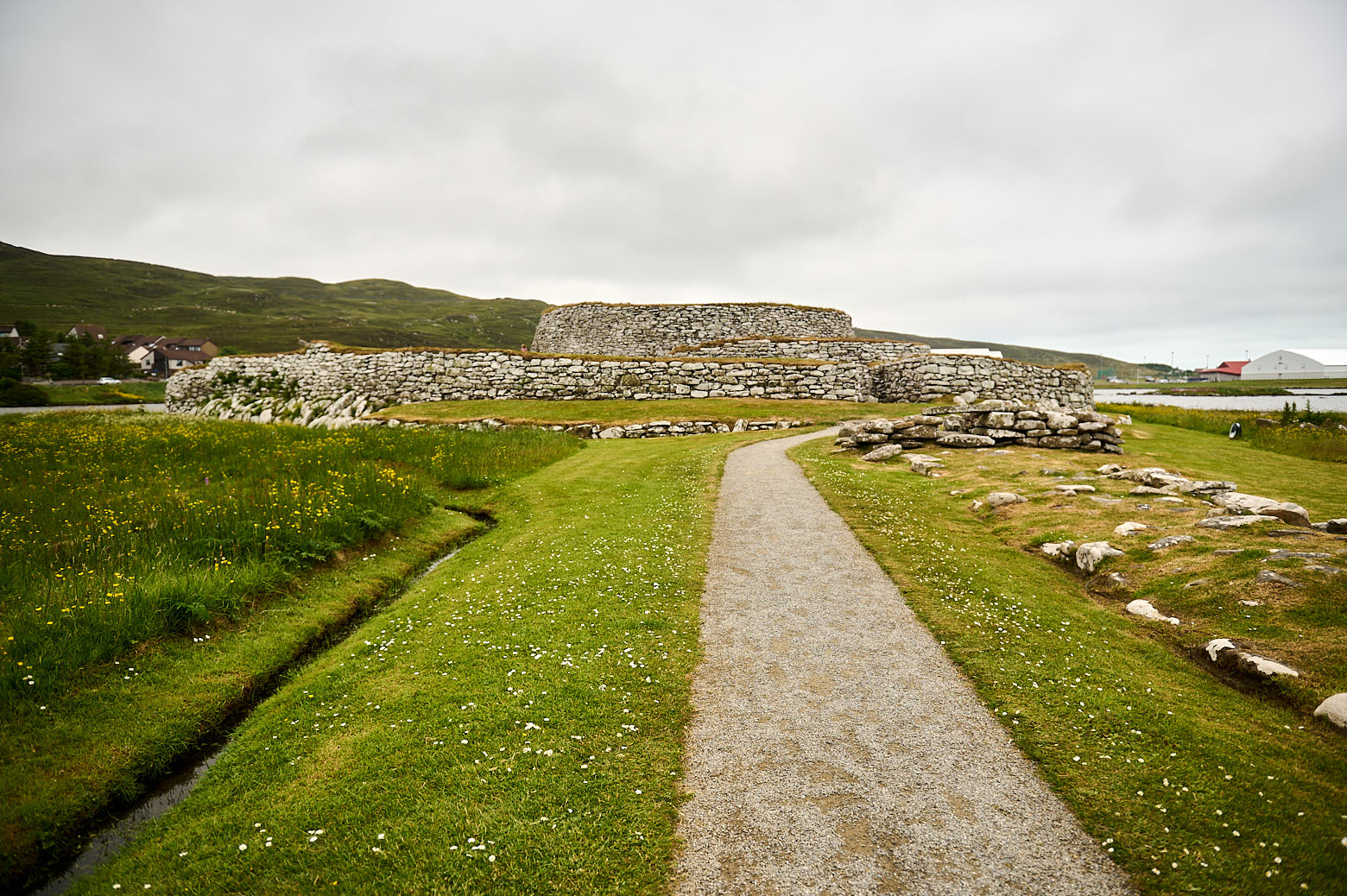
Around 200 BC a stronger wall was built around the islet and a ditch was dug to separate the land from the farm and could only be crossed via a draw-bridge.
The farm continued to be the main residence, but other wooden buildings with thatched roofs were built within the defensive wall. Around this time the Loch of Clickimin was cut off from the sea and ceased to be tidal. (Undiscovered Scotland)
A century later a “blockhouse” was built inside the defensive walls but never finished. Soon the works on the broch started. The entrance to the broch is behind the blockhouse, which is unusual for these buildings.

Originally the broch was about 12-15m high and had several rooms, enclosures and stairs within the thick, dry stone walls. There were also internal wooden structures providing shelter and accommodation for a significant number of people.
Later it was reduced in its size (and height) and became the home of one single family.
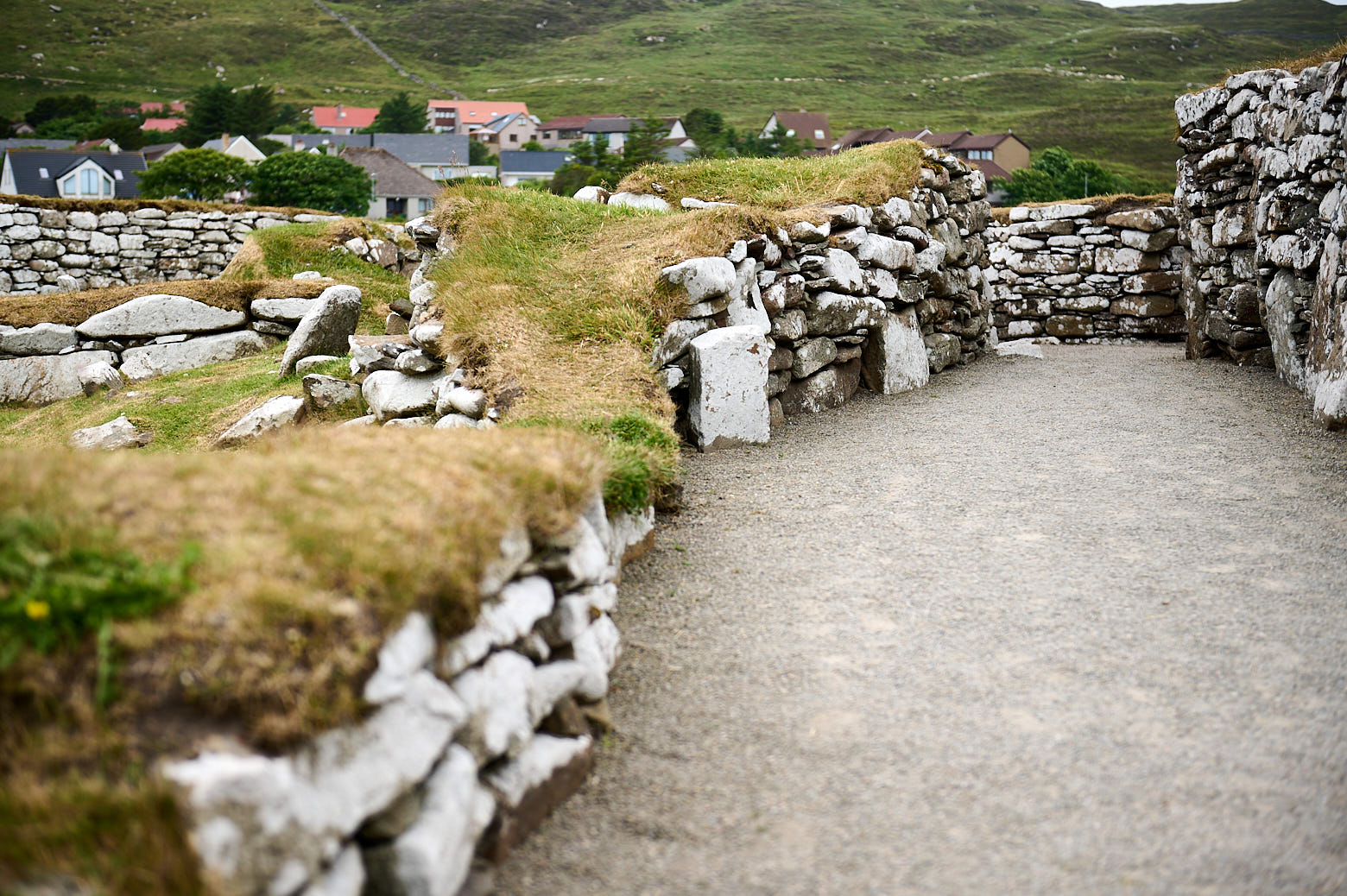
From around AD500, occupation became less organised and the houses in use were poorly built and partly dug into the ruins of the earlier structures. By the time the Norse arrived in the 800s, Clickimin had been abandoned and forgotten. (Undiscovered Scotland)
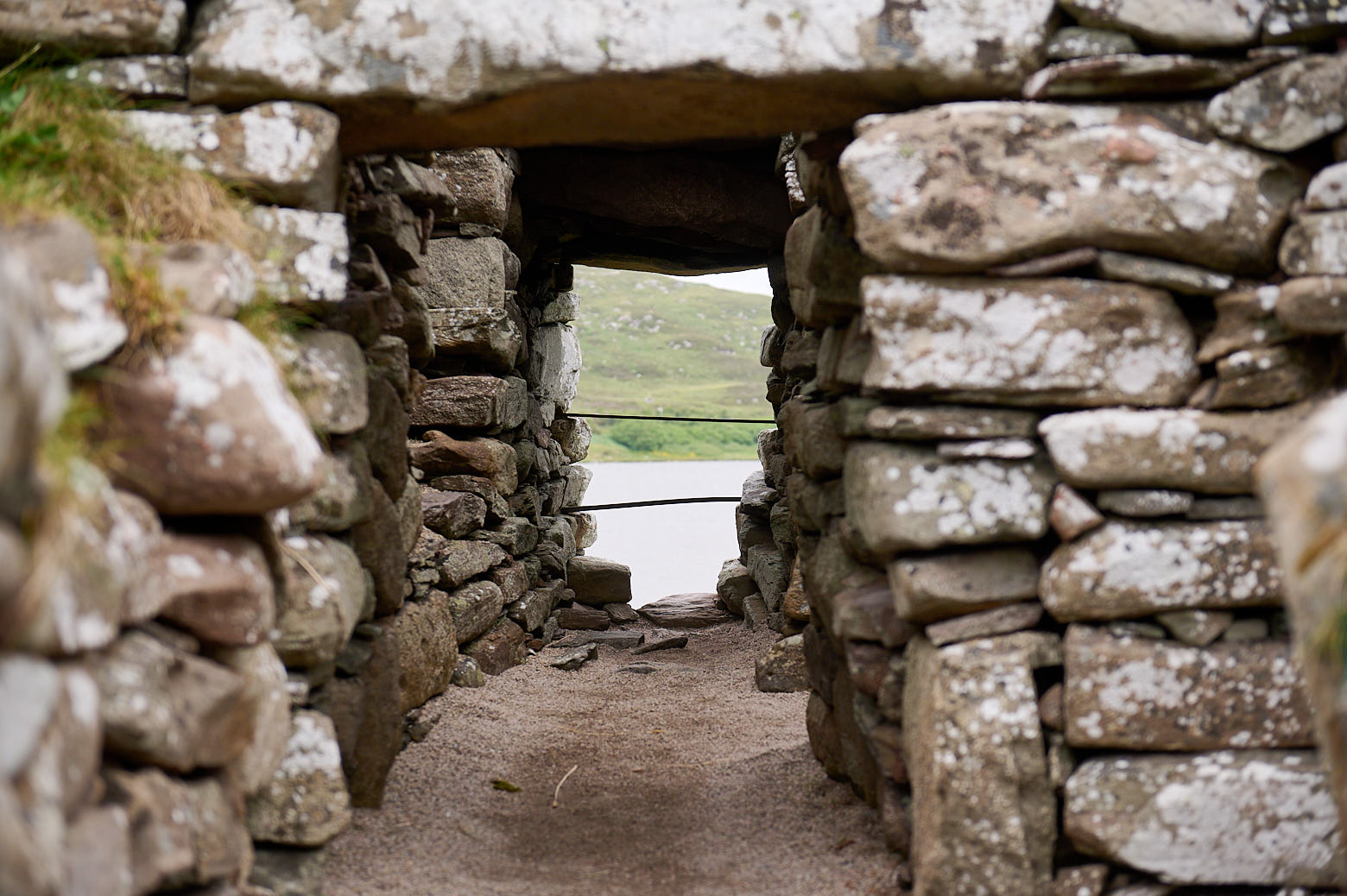
In the 1850ies the Victorian curiosity leads to quite crude digging up the mound and “restoring” of their findings. In the 1950s the area was professionally excavated and today Historic Environment of Scotland cares for Clickimin Broch.
